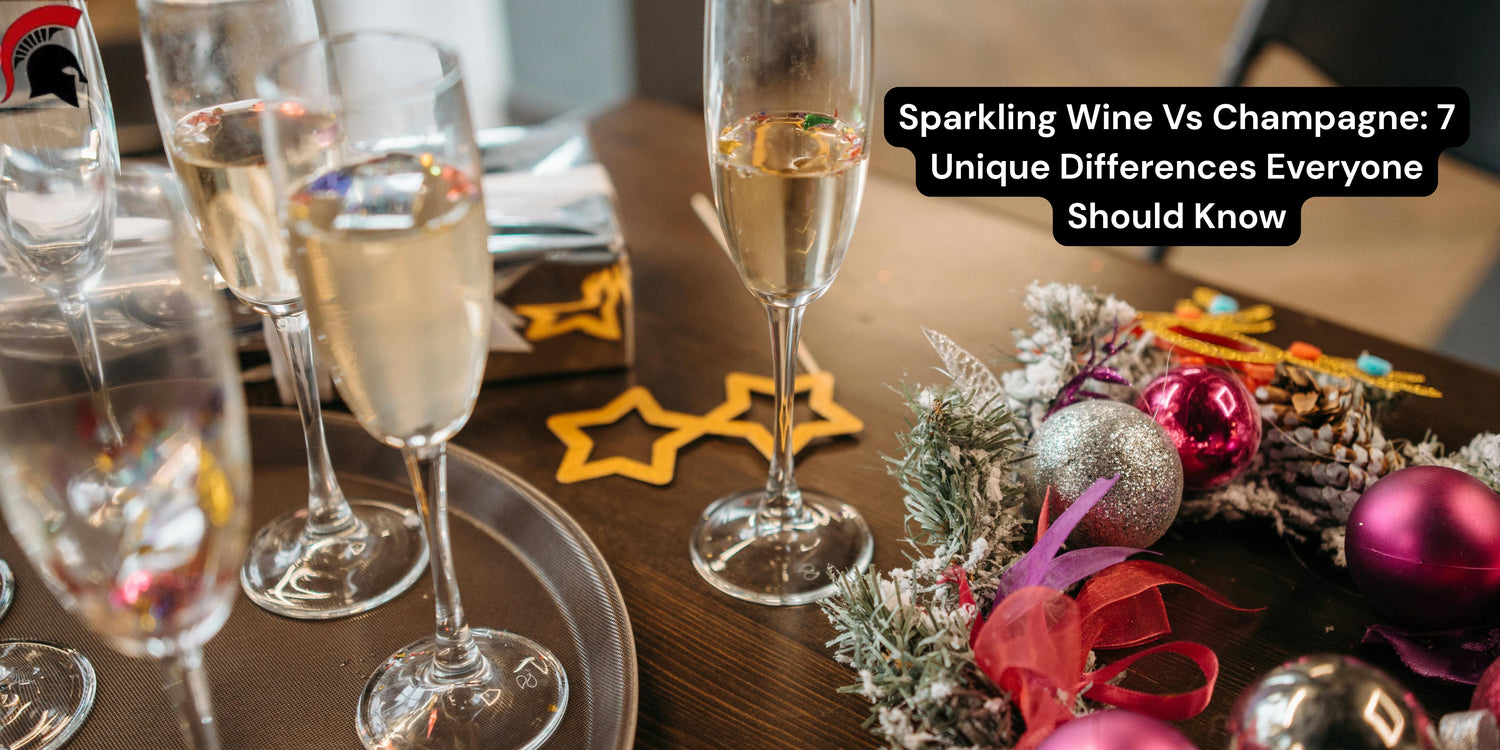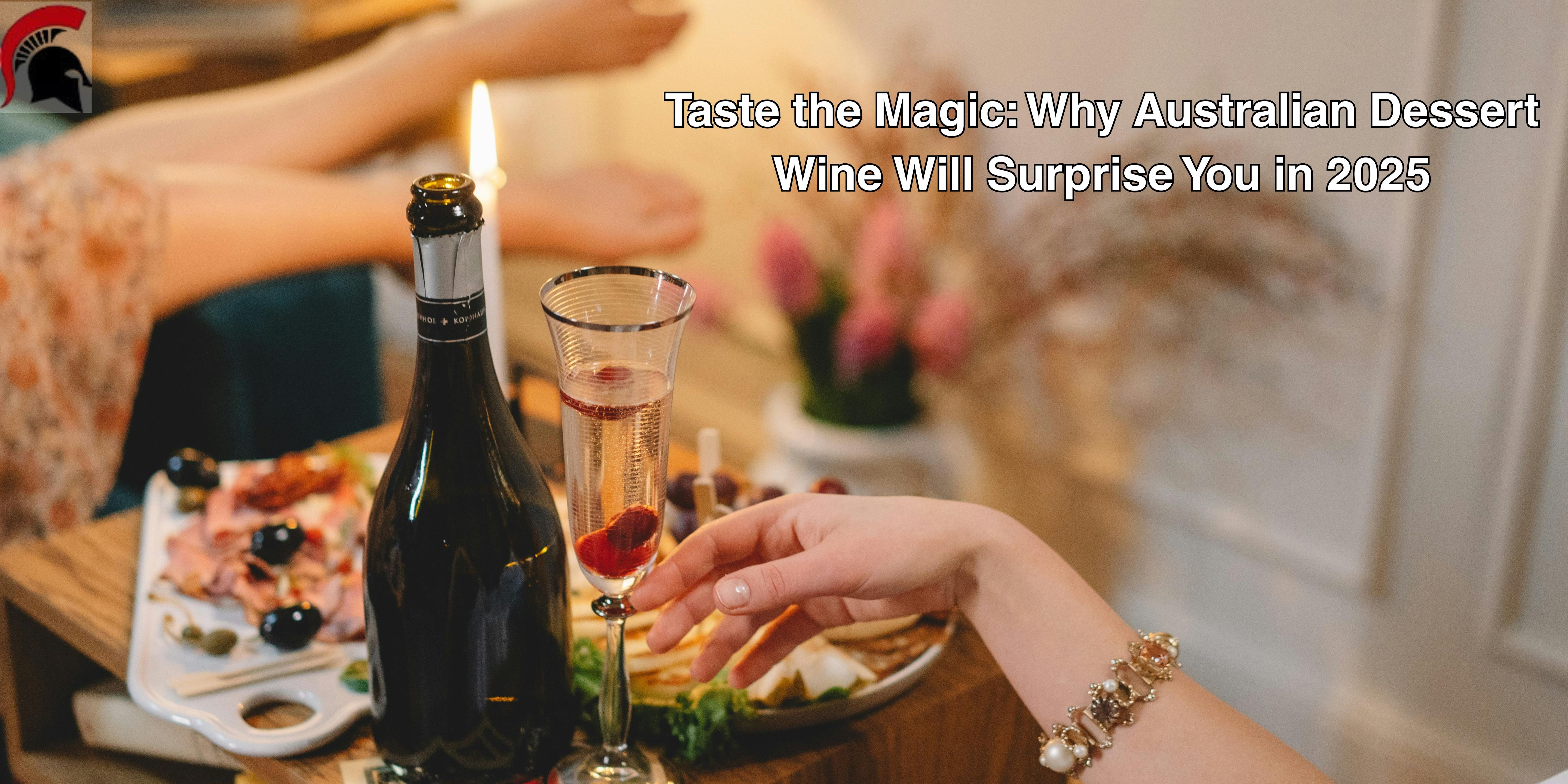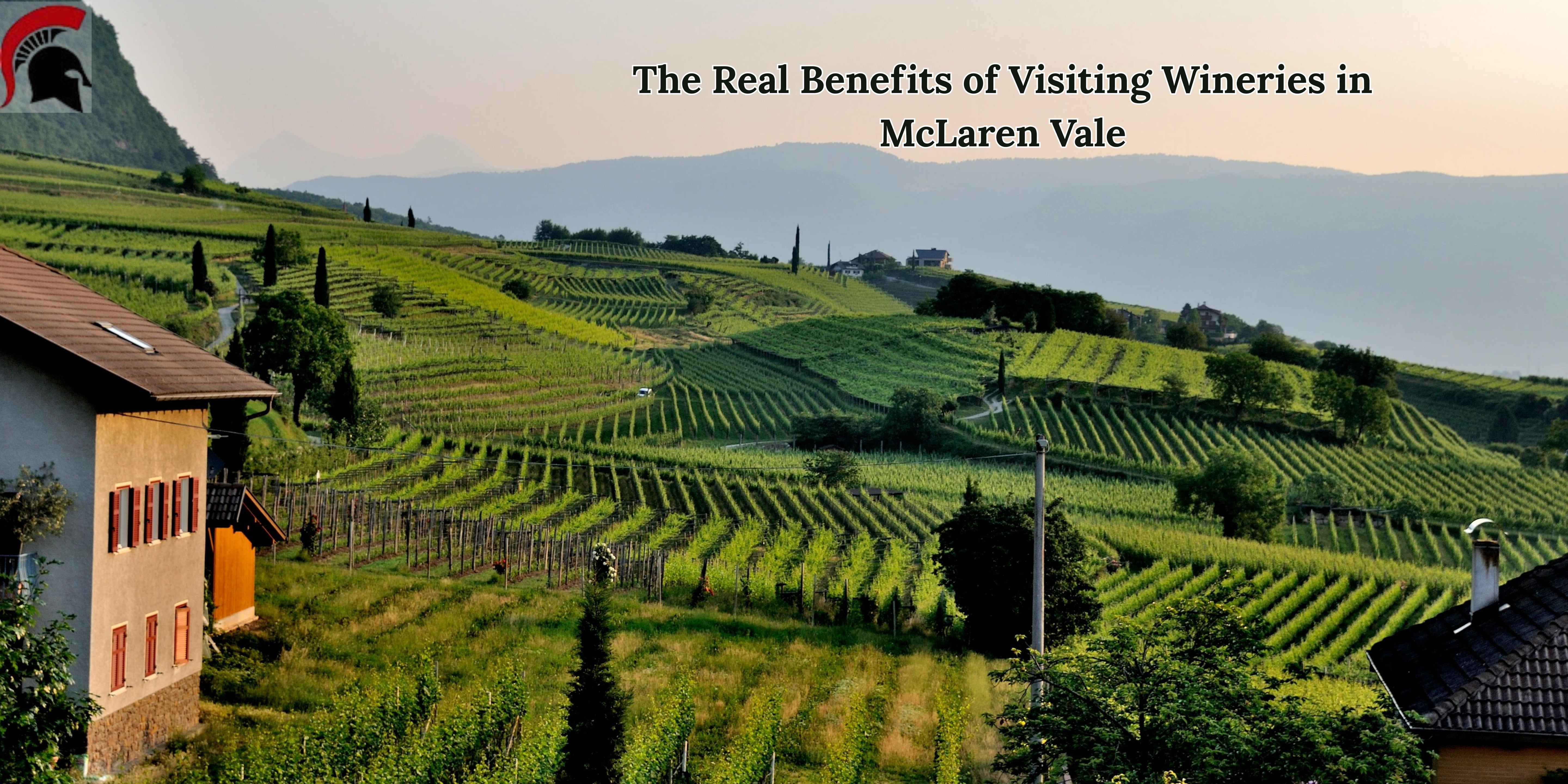Introduction — The Story Behind the Sparkling Wine vs. Champagne
Sparkling Wine vs. Champagne — it’s a debate that has swirled through cellar doors, fine dining rooms, and backyard celebrations for decades. Picture this: golden bubbles dancing up the side of a crystal flute, catching the last rays of a McLaren Vale sunset. The glass is cool in your hand, the aroma is bright and inviting… but here’s the question — are you sipping Champagne, or is it sparkling wine?
For many wine lovers, the line between the two is blurred. Some say Champagne is simply “fancier” sparkling wine; others insist the difference is night and day. In truth, the answer lies in centuries-old traditions, unique regional laws, and winemaking methods passed down through generations.
At Curtis Family Vineyards, we’ve spent decades in the heart of South Australia’s McLaren Vale mastering the art of crafting sparkling wines that honour tradition while embracing the vibrant, sun-kissed character of our region. Our heritage is steeped in hands-on winemaking, from the vineyard to the bottle — a commitment that allows us to speak with authority on what truly sets these two celebrated styles apart.
Where the Name Comes From — The Geography That Defines the Glass

Sparkling Wine vs. Champagne isn’t just about taste — it’s about geography, heritage, and rules that date back hundreds of years. Champagne is not simply a style; it’s a place. By international law, the name “Champagne” can only be used for sparkling wines made in the Champagne region of France, using specific grape varieties and traditional methods. This strict protection isn’t just marketing — it’s a safeguard for a centuries-old craft.
Sparkling wine, on the other hand, is a global citizen. From the rolling hills of Italy’s Prosecco region to Spain’s sunlit Cava vineyards — and, of course, right here in McLaren Vale— winemakers put their own stamp on this lively, celebratory style.
In contrast, sparkling wine is a global affair.
From the crisp Proseccos of Italy’s Veneto region to the rich Cavas of Spain, each style reflects the soil, climate, and craftsmanship of its home. Even here in McLaren Vale, Australia, Curtis Family Vineyards produces sparkling wines shaped by our warm days, cooling ocean breezes, and diverse terroir — creating bubbles with a uniquely Australian soul.
Types of Sparkling Wine vs Champagne
- Champagne – French origin, traditional method, complex flavours.
- Prosecco – Italian origin, fresh & fruity, Charmat method.
- Cava – Spanish origin, toasty & citrusy, traditional method.
- Australian Sparkling – Innovative styles with vibrant fruit character.
Regions Producing Sparkling Wine
- Champagne – France (exclusive to the name)
- Veneto – Italy (Prosecco)
- Catalonia – Spain (Cava)
- McLaren Vale & Tasmania – Australia (premium sparkling)
Quick Comparison: Prosecco vs Champagne vs Sparkling Wine
|
Feature |
Champagne (France) |
Prosecco (Italy) |
Sparkling Wine (Global) |
|
Origin |
Champagne region, France |
Veneto, Italy |
Various countries |
|
Method |
Traditional (Méthode Champenoise) |
Charmat (Tank) |
Traditional or Charmat |
|
Flavour Profile |
Complex, toasty, nutty |
Light, fruity, floral |
Varies by region & grape |
|
Price Range |
Premium |
Affordable |
Wide range |
|
Examples |
Moët & Chandon, Veuve Clicquot |
La Marca, Mionetto |
Curtis Family Vineyards, Cava |
McLaren Vale may not be Champagne, but our sparkling wines hold their own — offering bold, bright flavours that reflect our landscape and passion for winemaking.
Method Behind the Magic — How the Winemaking Process Shapes the Bubbles

When it comes to Sparkling Wine vs. Champagne, the magic isn’t only in the glass — it begins long before the cork is popped. The way the wine is made determines the size of the bubbles, the feel on your palate, and even the complexity of the flavour.
Champagne is crafted using the Méthode Traditionnelle, a meticulous process where the bubbles are born inside the bottle itself. This second fermentation happens over months — often years — as the wine rests on its lees (spent yeast cells), developing fine, silky bubbles and layers of flavour: brioche, almond, citrus zest. It’s labour-intensive, but the result is elegance in liquid form.
Many sparkling wines, including some of our own McLaren Vale styles, are also made using the Charmat or Tank Method. Here, the second fermentation takes place in a large, pressurised stainless steel tank. The process is quicker, preserving fresh, vibrant fruit flavours and producing lively, more exuberant bubbles — perfect for a crisp, refreshing style that bursts with orchard fruit and floral notes.
At Curtis Family Vineyards, our choice of method is deliberate. For wines that need refined complexity, we embrace the Méthode Traditionnelle. For those meant to be bright, youthful, and full of energy, we use the Charmat method. Both require skill and precision — and both reflect our commitment to crafting sparkling wines that speak to their purpose.
A recent Australian Wine Research Institute study found that consumers could identify Méthode Traditionnelle wines as having “creamier mousse and greater depth” while Charmat wines were described as “fresh, fruit-driven, and playful.” This research confirms what winemakers have always known — the method is the heart of the style.
Whether you prefer the graceful sophistication of Champagne’s approach or the joyful vibrancy of a McLaren Vale sparkling wine, knowing the story behind the bubbles makes every sip even more rewarding.
The Taste Test — From Crisp & Complex to Fruity & Floral

When it comes to Sparkling Wine vs. Champagne, taste is where the magic truly comes alive. It’s the moment the bubbles meet your palate, carrying flavours shaped by climate, grape varieties, and winemaking craft.
Champagne has a signature profile loved the world over — think bright citrus, toasted brioche, and a subtle mineral edge that lingers elegantly. This complexity comes from cool-climate grapes and extended time on lees, creating layers of flavour that slowly unfold in the glass.
Sparkling wine, however, is a far more diverse character. Its flavour spectrum stretches from the stone fruit warmth of peach and nectarine, to delicate floral perfumes, to tropical bursts of pineapple and passionfruit. This variation is driven by regional differences and the winemaker’s intent.
Here in McLaren Vale, our Mediterranean climate blesses us with long sunny days and cool sea breezes. The result? Grapes that ripen beautifully, developing rich, expressive fruit character without losing their natural acidity. At Curtis Family Vineyards, we harness that vibrancy to create sparkling wines that are bright, fruit-forward, and distinctly Australian — wines that sparkle not only in the glass, but on the palate.
A Wine Australia sensory analysis in 2022 confirmed that sparkling wines from warmer regions like McLaren Vale often show “ripe fruit intensity and lifted aromatics” compared to their cool-climate counterparts. This makes them perfect for those who love their bubbles with an extra burst of flavour.
|
Feature / Flavour Note |
Champagne |
McLaren Vale Sparkling Wine |
|
Primary Flavours |
Citrus zest, green apple, toasted brioche |
Peach, nectarine, tropical fruits, floral hints |
|
Aromas |
Mineral, chalky, nutty complexity |
Lifted aromatics, fresh floral, ripe fruit intensity |
|
Texture |
Fine, persistent mousse with creamy mouthfeel |
Lively bubbles, smooth yet vibrant texture |
|
Climate Influence |
Cool-climate grapes create high acidity and subtlety |
Mediterranean climate brings richness and fruit-forward style |
|
Winemaking Style |
Traditional Method with long lees ageing |
Combination of Traditional & Charmat methods to preserve freshness |
|
Overall Character |
Elegant, complex, layered |
Bright, expressive, joyful |
|
Perfect For |
Celebratory toasts, refined dinners |
Summer parties, beach picnics, casual celebrations |
Time in the Cellar — How Aging Changes Everything

Ever wondered why some bubbles feel crisp and zesty, while others seem to melt in your mouth with layers of flavour? The secret often lies in how long they’ve been resting quietly in the cellar.
Champagne’s Timeless Patience
By French law, non-vintage Champagne must age for at least 15 months before release — and vintage Champagnes stay even longer, often three years or more.
Most of this time is spent “on the lees” (resting on dead yeast cells), which slowly infuses the wine with creamy, nutty, and biscuity notes. This is why a fine Champagne often carries whispers of fresh brioche or roasted almonds alongside its citrus and mineral profile.
Sparkling Wine’s Flexible Clock
Sparkling wines outside Champagne have more freedom. They can be released young for a bright, fruity freshness or aged longer to develop deeper complexity. The method matters too — wines made using the Charmat method usually see less lees contact, keeping flavours crisp and vibrant, while Traditional Method sparkling wines lean towards richer textures and aromas.
Curtis’s Balanced Approach
At Curtis Family Vineyards, we believe ageing is a fine art — too little, and you lose depth; too much, and you can overshadow the fruit.
Our McLaren Vale wines spend just the right amount of time on lees to build subtle creaminess while keeping our signature fruit-forward character alive. The result? Bubbles that dance on the palate with both freshness and finesse.
Ageing Comparison Table
|
Feature |
Champagne |
Curtis McLaren Vale Sparkling |
|
Minimum Ageing |
15 months (non-vintage), 3+ years (vintage) |
Flexible — tailored for style & flavour |
|
Lees Ageing Impact |
Rich brioche, nutty complexity |
Soft creaminess with ripe fruit notes |
|
Flavour Focus |
Citrus, mineral, toasted bread |
Peach, tropical fruit, floral lift |
|
Style Goal |
Elegance and layered depth |
Freshness with balanced complexity |
Prestige, Price Tags, and Perceptions
Why does Champagne command sky-high prices while some sparkling wines offer incredible value? It’s not just about what’s in the bottle — it’s about centuries of history, brand prestige, and strict production rules.
A recent Wine Intelligence study found that over 70% of consumers associate Champagne with luxury and celebration, while only 35% link sparkling wine with the same sense of occasion. But here’s the twist — quality doesn’t always match the price tag.
Champagne pricing is influenced by:
- Limited vineyard land in France’s Champagne region.
- Labour-intensive Méthode Traditionnelle requirements.
- Global demand exceeding supply.
Meanwhile, well-crafted sparkling wine Pinot noir (like those from McLaren Vale) can deliver similar elegance — sometimes even more vibrant fruit expression — at a fraction of the cost. At Curtis Family Vineyards, our focus is on delivering premium quality without compromise, allowing you to enjoy world-class bubbles without the “luxury tax.”
Champagne vs Sparkling Wine: Price & Value Snapshot
|
Factor |
Champagne |
Premium Sparkling Wine (Curtis Family Vineyards) |
|
Average Price (750ml) |
$50–$300+ |
$25–$50 |
|
Perceived Prestige |
Global luxury status |
Regional premium appeal |
|
Production Costs |
Very high due to land & regulations |
High, but more flexible |
|
Flavour Profile |
Elegant, complex, often restrained fruit |
Fresh, vibrant, fruit-forward |
|
Value for Money |
Often pays for heritage & branding |
Focused on quality-to-price ratio |
Insider Tip: If you’re looking for the fine bead, complexity, and celebratory sparkle without spending like a royal, Curtis sparkling wines deliver the experience — with McLaren Vale sunshine in every sip.
Perfect Pairings & When to Pour Each

There’s an art to matching bubbles to the moment — and when done right, it can turn a good occasion into an unforgettable one. In fact, a recent Wine Australia tasting panel found that the right pairing can enhance perceived wine quality by up to 40%.
Champagne Pairings — A Touch of Elegance
Champagne’s signature citrus, brioche, and mineral notes make it a natural partner for refined, delicate flavours. Think:
- Fresh South Australian Coffin Bay oysters with a squeeze of lemon
- Soft, creamy triple cream Brie
- Light seafood canapés at a black-tie event
Perfect for weddings, milestone birthdays, or any time you want to make a statement.
Sparkling Wine Pairings — Versatile & Vibrant
Sparkling wines — especially pinor noir or blanc de blanc wine from McLaren Vale — often lean more fruit-forward, making them incredibly food-friendly and easy to enjoy in casual settings. Try pairing with:
- Grilled prawns with garlic butter
- Seasonal South Australian stone fruit platters
- A selection of local hard cheeses for a picnic in the vines
Ideal for Sunday lunches, beachside picnics, or toasting the little wins in life.
Quick Comparison Table: When to Pour
|
Occasion / Food |
Champagne |
Sparkling Wine (McLaren Vale) |
|
Wedding toast |
✔ Traditional choice, high prestige |
✔ Modern, vibrant alternative |
|
Seafood entrée |
✔ Delicate match with oysters, scallops |
✔ Prawns, calamari, fresh fish |
|
Casual BBQ |
✘ Too formal for most |
✔ Refreshing and fruit-forward |
|
Cheese platter |
✔ Soft cheeses & creamy textures |
✔ Cheddar, aged Gouda, local blue |
|
Everyday celebrations |
✘ Price often limits casual use |
✔ Affordable without compromise |
Curtis Family Vineyards sparkling wines have graced everything from intimate dinners to grand celebrations — both here in South Australia and on the international stage. With every bottle, you’re not just opening wine; you’re opening a moment worth remembering.
Why McLaren Vale Sparkling Wines Deserve Your Attention
If you think sparkling wine can only shine in France, think again. McLaren Vale is quietly crafting some of the most exciting bubbles in the world — and Curtis Family Vineyards is leading the charge.
A Symphony of Terroir and Talent
Nestled between rolling hills and the Gulf St Vincent, McLaren Vale offers the perfect blend of warm days, cooling sea breezes, and mineral-rich soils. This unique climate coaxes the grapes into developing vibrant fruit flavours while retaining refreshing acidity — the backbone of any great sparkling.
At Curtis Winery, we don’t just rely on our terroir; we elevate it. Every bottle is a blend of generational winemaking wisdom and modern innovation. From gentle whole-bunch pressing to precise temperature control during fermentation, every step is taken with care — ensuring elegance, balance, and finesse.
What Makes Curtis Sparkling Stand Out?
- Fruit-Driven Brilliance – Expect aromas of fresh pear, white peach, and citrus zest with a delicate, creamy mousse.
- Lees-Aging for Depth – Our wines are aged on lees to create a beautiful texture and nutty complexity without losing freshness.
- Sustainable Practices – We work with the land, not against it, ensuring every vintage reflects both quality and environmental respect.
Local Heart, Global Standard
While McLaren Vale sparkling wines carry the soul of South Australia, their quality rivals many of the world’s most renowned bubblies. Wine critics and seasoned sommeliers alike have noted that Curtis wines offer a level of refinement that can confidently sit on any international stage — often at a fraction of the price.
Taste the difference yourself — from a sunlit brunch by the coast to a black-tie celebration, Curtis sparkling wines bring a touch of McLaren Vale magic to every moment.
Conclusion — Raising a Glass to Your Newfound Knowledge

By now, you’ve uncovered seven fascinating differences between sparkling wine and Champagne — from where they’re born and how they’re crafted, to the way they dance with food and suit different occasions. You’ve also seen that premium elegance isn’t just found in a French postcode — it can be poured straight from the heart of McLaren Vale.
At Curtis Family Vineyards, we’ve spent generations refining our craft so every bottle of sparkling is as vibrant, refined, and memorable as the moment it’s shared. Whether you’re toasting at a seaside wedding, enjoying a Sunday lunch with South Australian oysters, or simply celebrating that life’s good today, our bubbles are made to elevate your experience.
Visit our Cellar Door or Order wines online to taste the difference first-hand — feel the sunshine in every sip and meet the people behind the pour.
Shop Online and bring McLaren Vale’s finest sparkling wines to your table, wherever you are in the world.
Life’s most joyful moments deserve a glass worth raising. Here’s to your next toast — may it sparkle with Curtis family vineyards.
Frequently Asked Questions
What is a good Substitute for Champagne?
A quality sparkling wine from regions like McLaren Vale, Prosecco from Italy, or Cava from Spain can be an excellent substitute for Champagne, offering similar bubbles at a lower price.
Is champagne really just sparkling wine?
Yes — Champagne is a type of sparkling wine made exclusively in the Champagne region of France under strict production rules. All Champagne is sparkling wine, but not all sparkling wine is Champagne.
Is Sparkling wine same as Prosecco?
No — Prosecco is a style of sparkling wine from Italy, usually lighter, fruitier, and made using the Charmat method, while other sparkling wines may use different techniques.
Is Prosecco close to Champagne?
They both have bubbles, but Champagne is richer and more complex, while Prosecco is fresher and fruitier. Each offers a distinct taste experience.
Which is more alcoholic, champagne or Wine?
Champagne typically has 12–12.5% ABV, which is similar to many still wines. The difference is the bubbles can make Champagne feel lighter and more refreshing.
Is champagne the healthiest alcohol?
Champagne is relatively low in calories compared to many alcoholic drinks, but like all alcohol, it should be enjoyed in moderation for health.
Is any sparkling wine considered champagne?
No — only sparkling wine made in France’s Champagne region using the traditional method can legally be called Champagne.
Can i replace prosecco with sparkling wine?
Yes — most sparkling wines can substitute for Prosecco in cocktails and celebrations, though the flavour profile will vary.



Leave a comment
This site is protected by hCaptcha and the hCaptcha Privacy Policy and Terms of Service apply.